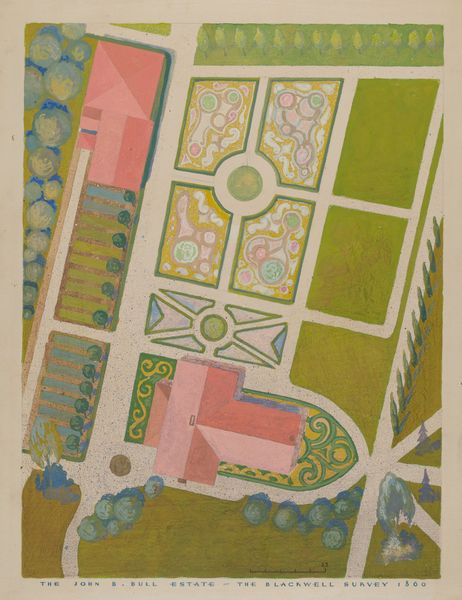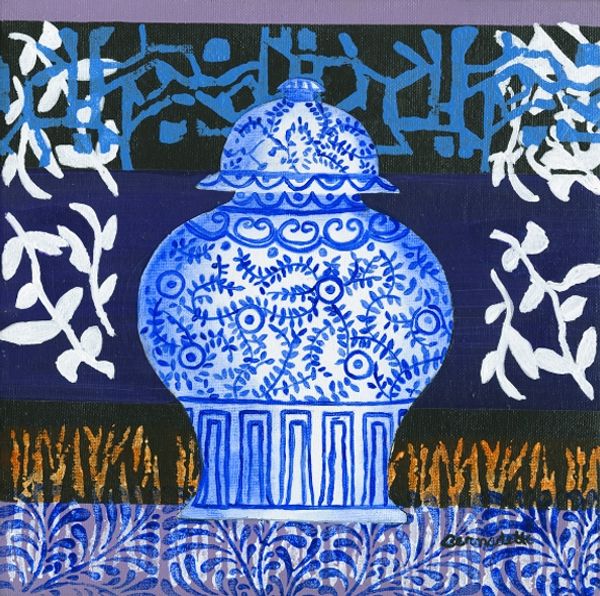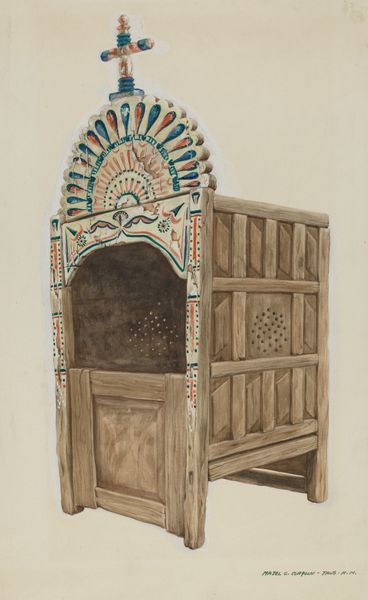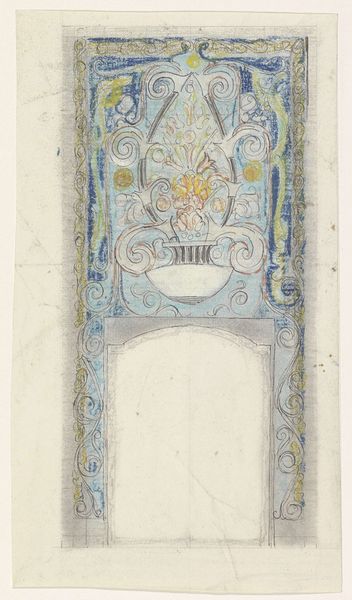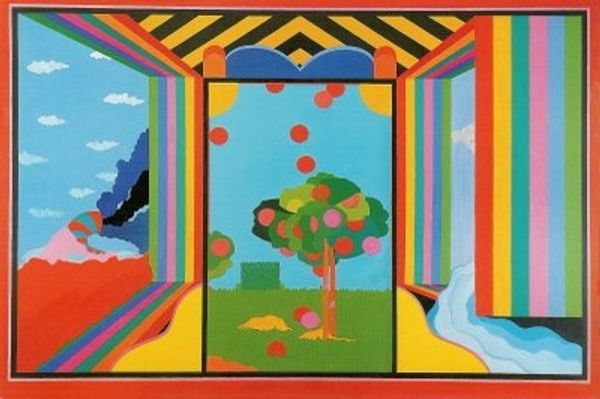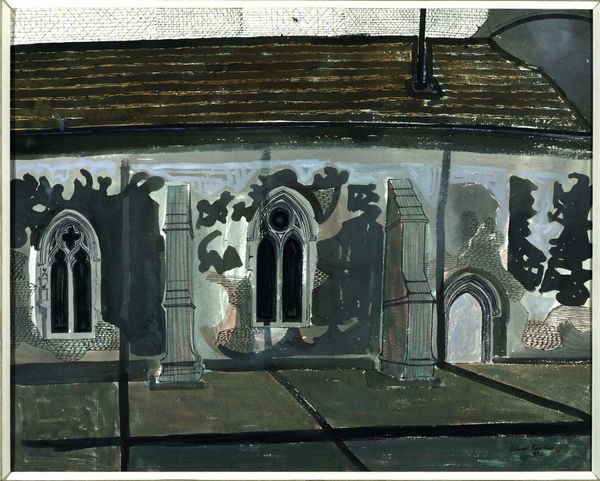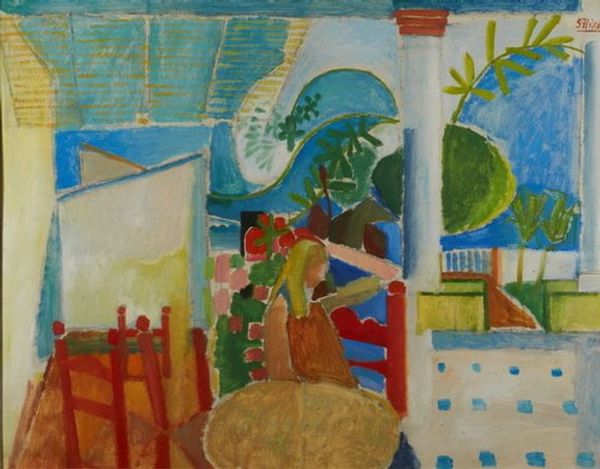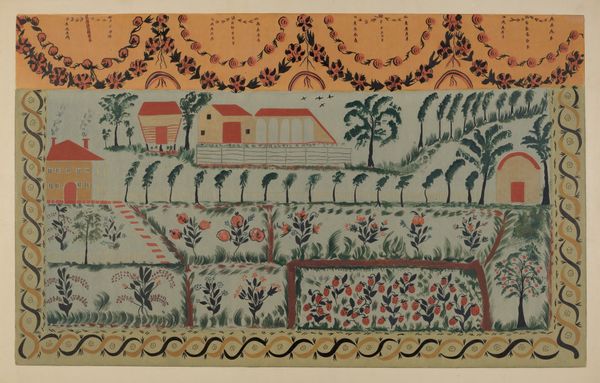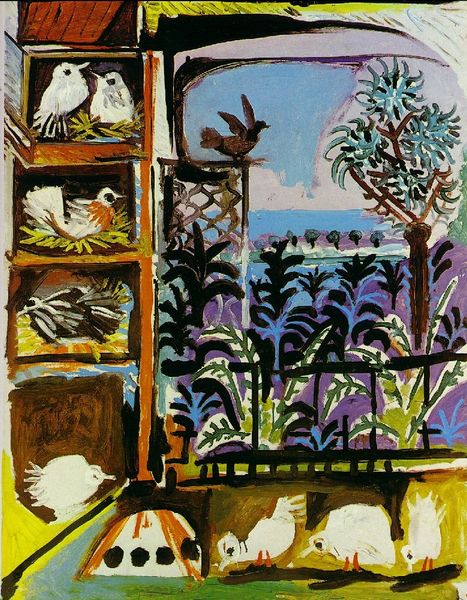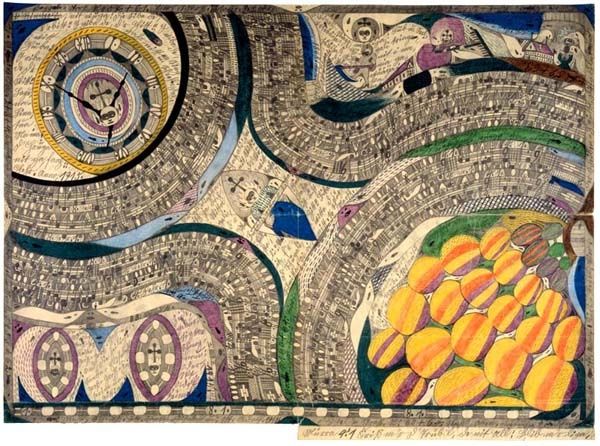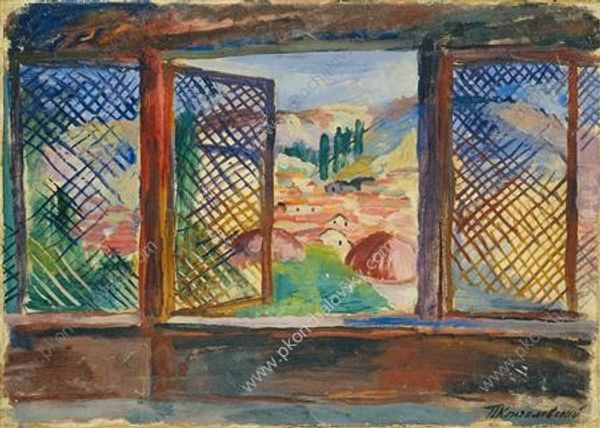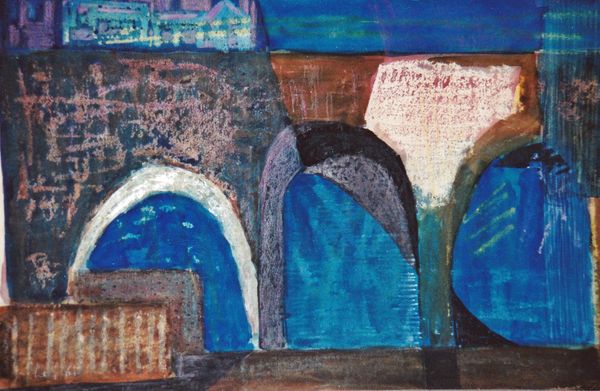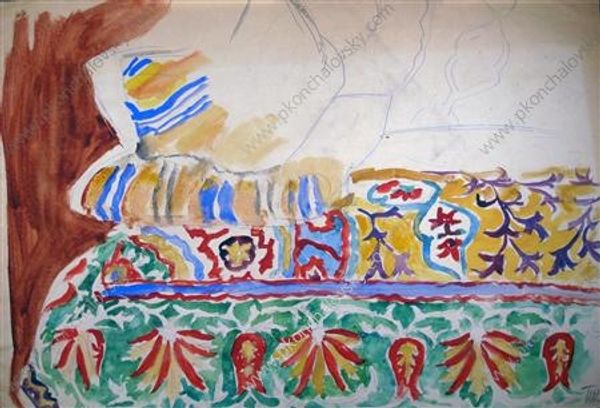
plein-air, watercolor
#
plein-air
#
landscape
#
watercolor
#
orientalism
#
watercolor
Copyright: Patrick Procktor,Fair Use
Curator: Patrick Procktor’s “Cataract, Aswan,” created in 1985, gives us a glimpse into a specific time and place, refracted through the lens of orientalism. Editor: My immediate reaction is to focus on the contrast in this piece. The architectural rigidity and repetitive motifs versus the soft, dreamlike landscape beyond. It almost feels staged. Curator: Indeed. Procktor, who was openly gay, travelled extensively, often drawing inspiration from his experiences in the Middle East. It's fascinating how the painting acts as a kind of window onto both a real landscape and a constructed fantasy, one shaped by Western perspectives. Editor: I see those "constructed fantasies" expressed particularly well in his use of watercolor, traditionally associated with the ephemeral. Here, it layers onto a scene implying colonial travel, and the exotic “other”. It's not only about capturing a location but also conveying particular expectations related to production and its effect on the viewer. Curator: Exactly! By using watercolor en plein air, Procktor inserts himself directly into this history of orientalism. The artistic process itself becomes a commentary on how Western artists engaged with and interpreted these cultures. It begs us to consider power dynamics and representation. Editor: The materials tell a tale here. I’m particularly interested in the relationship of shadow and light created via architectural interventions. How would the local craftspeople have viewed the use of such architectural ornamentation? Where would he source the materials? Who built it? These factors inform his position of privilege, both financial and cultural. Curator: And the shadow cast could allude to this complicated position as an outsider, which speaks to the ongoing dialogue of appropriation. The light, airy strokes used to depict the landscape almost seem at odds with the heavily patterned screen that partially obscures the view. Editor: So, the work highlights cultural exchange while calling attention to artistic choices embedded within material realities, echoing historical narratives and production conditions? It’s a fascinating challenge to prevailing orthodoxies. Curator: Agreed. I'd add it presents us with an image steeped in aesthetic beauty while simultaneously confronting us with the complex and sometimes problematic history of artistic interpretation and cross-cultural engagement. Editor: Absolutely. "Cataract, Aswan" really brings forth a tension between observation and construction, making you appreciate Procktor’s work that goes beyond surface level.
Comments
No comments
Be the first to comment and join the conversation on the ultimate creative platform.
